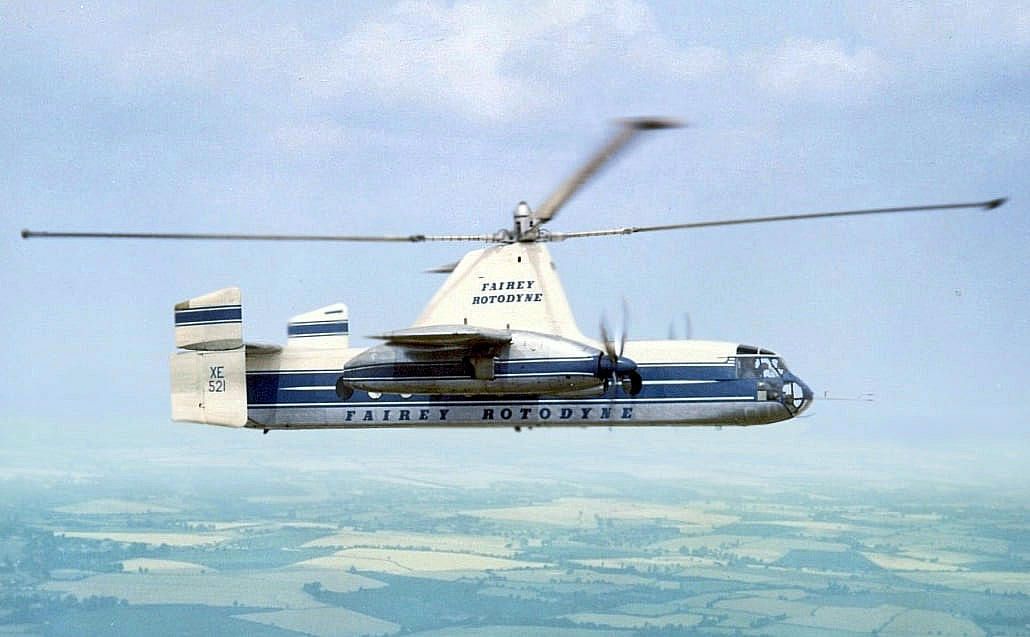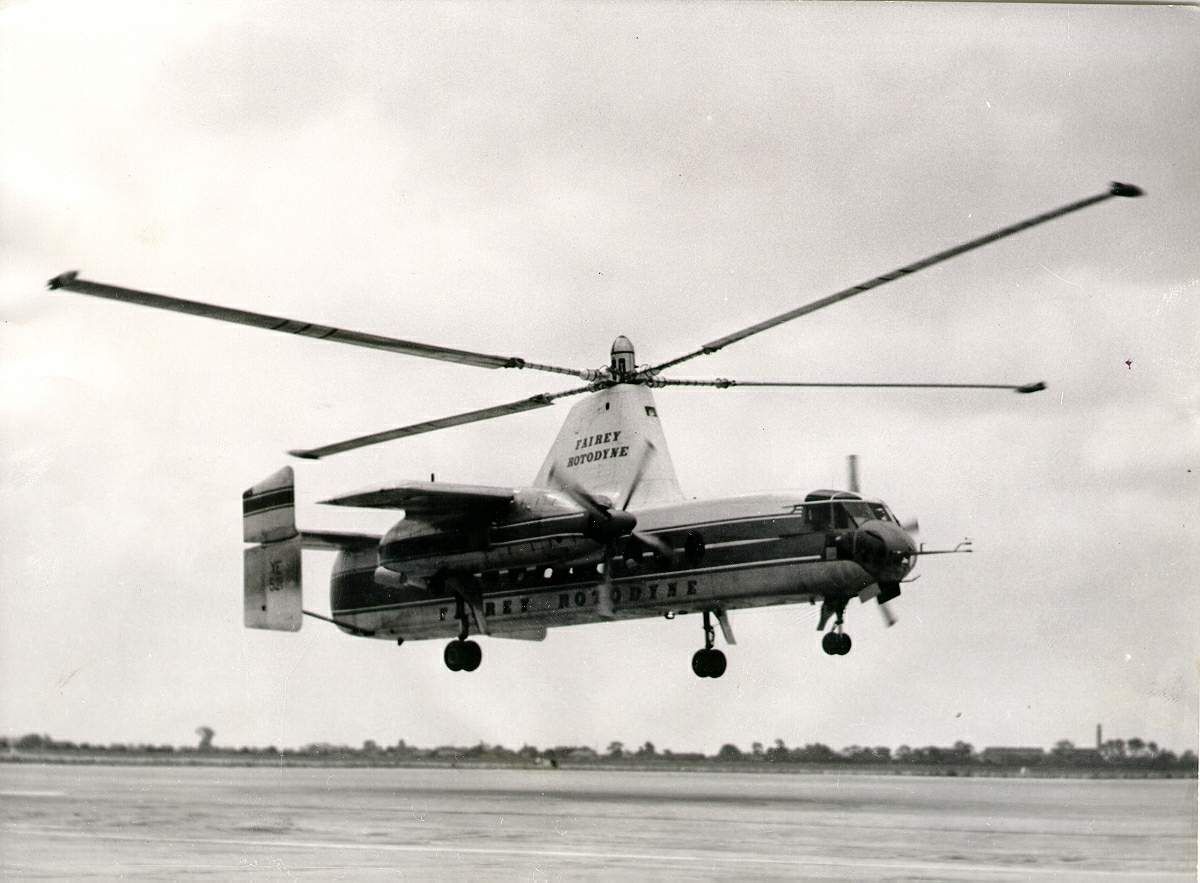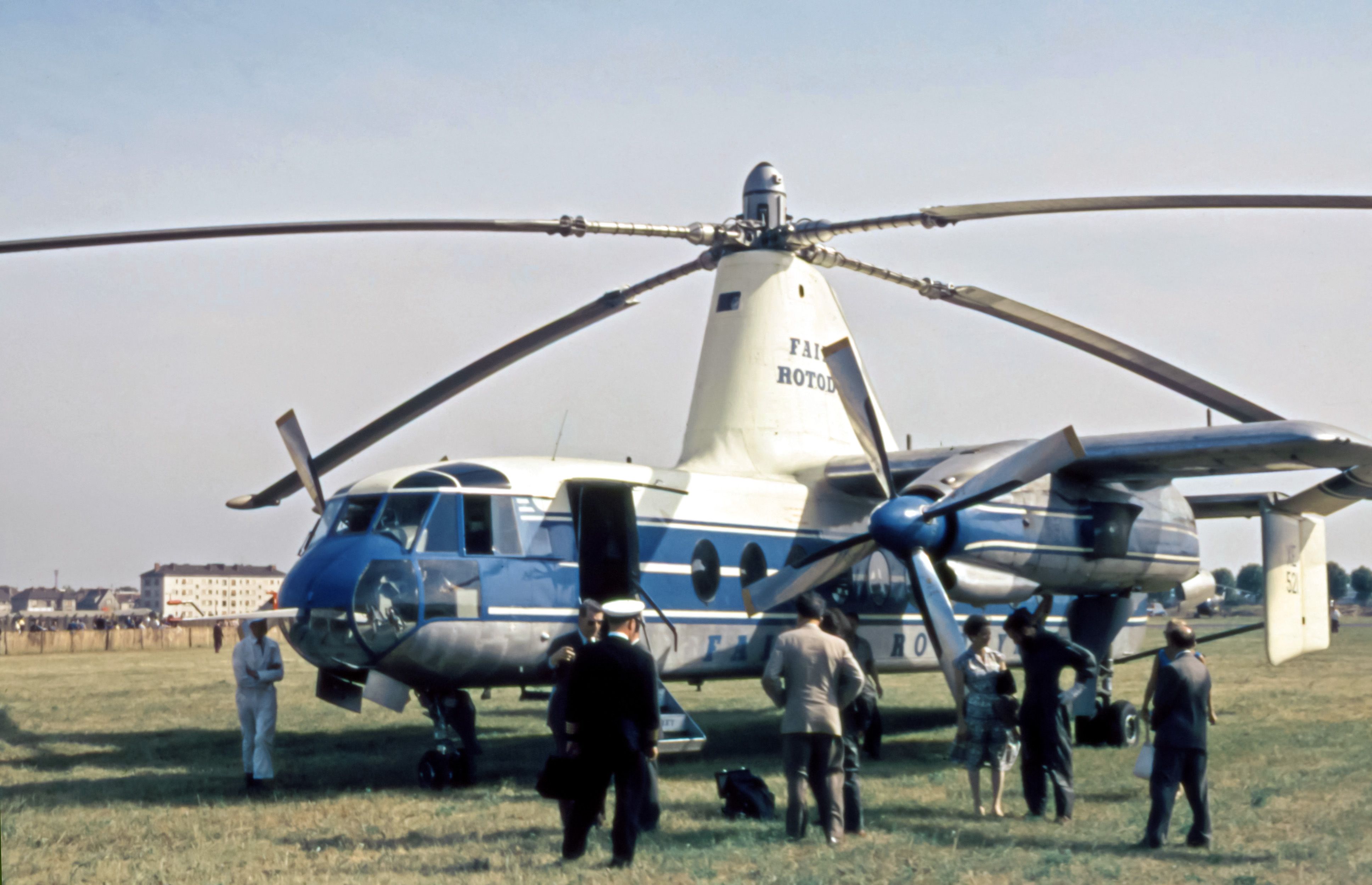The aviation industry and its significant manufacturers have graced us throughout the past century with remarkable engineering works. These designs pushed the boundaries of capability, size, speed, safety, and efficiency; modern-day aircraft, whether civilian or military, feature innovations that were once only dreamed of. That being said, the path to success for many aircraft is not linear, and plenty of planes have never reached the limelight.
One of these planes was the Fairey Rotodyne, built by Fairey Aviation for commercial and military use. The Fairey Rotodyne, which had significant promise and was successful in trials, was eventually canceled with only one prototype built. Let us explore what could have been.
What was the Fairey Rotodyne?
Starting in the 1930s, a new field of aeronautics began to gain momentum, called rotary-wing aircraft. However, this was put on hold during the Second World War, and by the end of the war, the helicopter concept began showing promise but was far from perfect.
In 1946, British aircraft manufacturer Fairey Aviation began developing a new type of rotary-wing aircraft. The ethos behind the aircraft would be to combine the advantages of the helicopter, plane, and autogyro aircraft. At the helm of the Fairey Aviation project was Doctor J.A.J. Bennett, who was among the first British pilots to qualify in rotary-wing aircraft.
The notion behind the new rotary aircraft initially called the compound helicopter, was that it would take off and land vertically. The aircraft would have a power-driven rotor, and once the plane was in the air, all power would come from the propeller and the wings, producing the lift. After takeoff, the aircraft would transition into forward flight by transferring the energy from the rotor to the propellers, with lift simultaneously being moved to the short wing. This aircraft would be designed to be more efficient than a regular helicopter.
\
Interest from airlines
After more than 15 years of research into compound helicopters by the Fairey Company after inheriting the concept from Cierva Autogyro Company. The first three-compound -helicopter, called the Gyrodyne, had its maiden flight on December 7, 1947. These successful trials further proved the concept, and by the early 1950s, Fairey was already planning to build a sizable civilian transport aircraft based on the Gyrodyne design. They soon built a concept aircraft named XE521.
The company planned to meet British European Airways’ requirements for a short- to medium-haul aircraft that could fit between 30 and 40 passengers. By 1955, the idea had turned into a firm project, and construction on the prototype began.
British European Airways was not the only airline interested in the Rotodyne. The Royal Air Force (RAF) ordered twelve transport versions on the condition that the aircraft met all requirements. Another airline that operated helicopters, New York Airways, signed a letter of intent for five of the Rotodynes with an option for 15 more. Japan Airlines was also heavily interested in the aircraft and wanted to fly the Rotodyne between Tokyo and the airport and the route between Tokyo and Osaka.
The prototype made its first complete transition to and from vertical to cruise mode in April 1958. A year later, in June 1959, the Rotodyne flew to the Paris Air Show for its first flight outside the United Kingdom. Even after the demonstrations and the interest shown by numerous airlines, the aircraft never received a firm order.
The program’s fate
In the aftermath of failing to attain any orders, Fairey Aviation was acquired by Westland in February 1960. Then, in February 1962, the UK government withdrew support from the project, and it was thus canceled.
The prototype XE521 was scrapped at Royal Aircraft Establishment Farnborough, except for the fuselage section, which was sent to Cranfield College until 1981. The remains of the prototype were then forwarded to the Helicopter Museum.
Sources: Flight Journal; The Engineer



